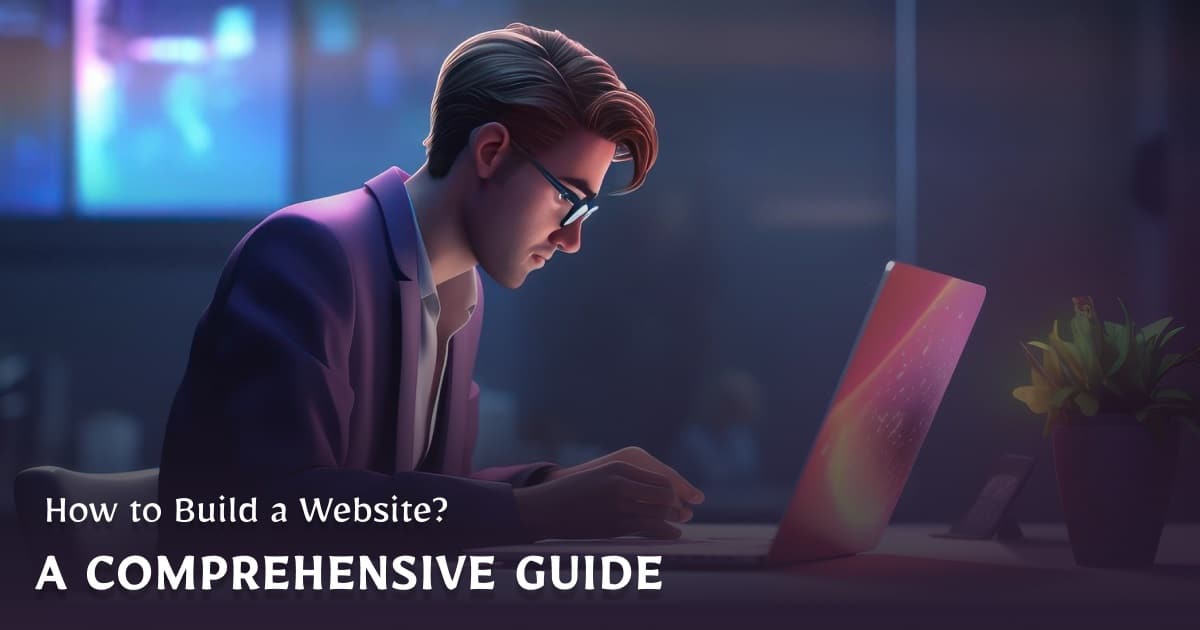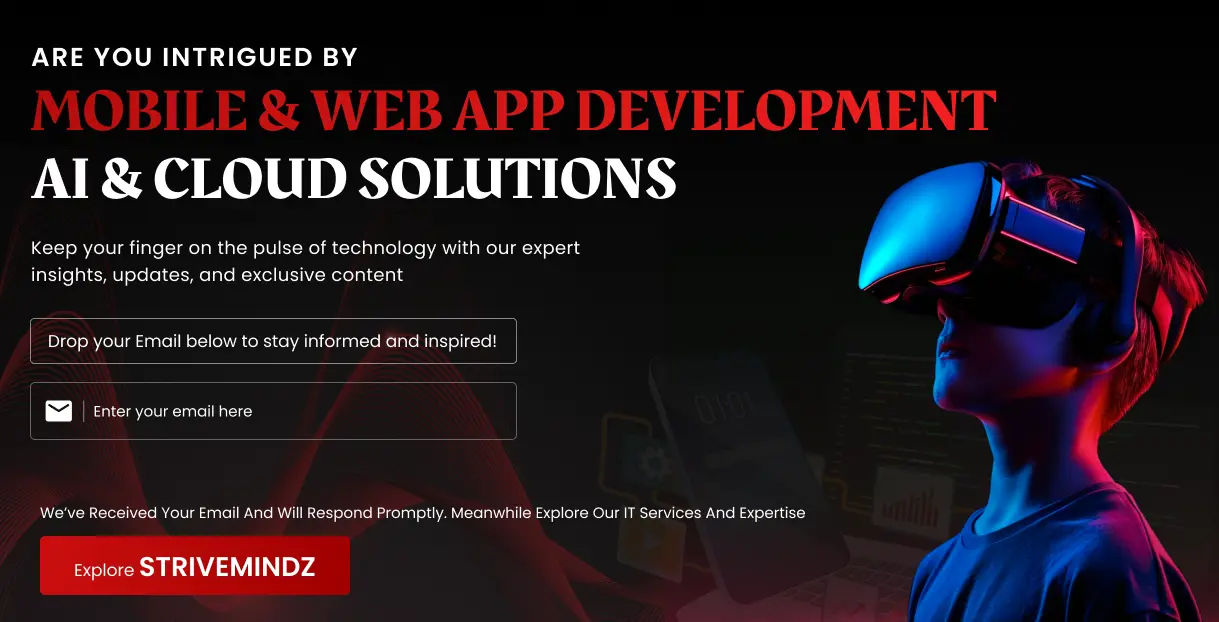How to Build a Website?- A Comprehensive Guide

How do I build a website? Are you looking for a solution? Right here, you’ll find everything you need 🙂
The world has such a wide variety of cultures, thinking, and knowledge that drive the way a person takes any idea presented in front of them. When someone presents any idea in front of people, these factors help them understand and react accordingly. But there are chances that your idea hasn’t made its way perfectly through people’s way of thinking and they need more specifications and details to understand the idea that is being presented.
The simplest way of information exchange is a website. It is a quick and easy way to connect and to give info out to people. When your idea is presented on a website with a few pictures, updates and relevant information, it reaches out to people more.
In the business world, people spend most of their time online and what they require is a source that can give them proof of authenticity about the venture or product they are investing in. Having a website offers that credibility. If you have a website with feedback, promotional videos and important information showing your authenticity then that will have an impact on your client’s perspective about you. The easy-to-use website may help your customers feel comfortable working with you.
With the help of a website, you can build authority for yourself in the competition. Each website is different from others and the ideas presented are unique. When anything is explained in detail and you can show people that the idea can make an impact then, people will be attracted to your work. It helps them understand things better and then reflect upon them. Websites make an impression on the customer so having a good website with quality content can very serve the purpose you have built it for.
How to Build a Website?- A Comprehensive Guide For Beginners
In today’s digital world, having a well-built website is an invaluable asset, whether you’re an individual aiming to showcase your work, a small business owner establishing your online presence, or an organization seeking to connect with your target audience. With various approaches and platforms available, building a website can seem daunting at first. However, by following these essential steps, you can create a professional and effective website that meets your unique needs.
Step 1: Planning Your Website
Before diving into the technical aspects, it’s crucial to plan your website’s purpose and functionality.
- Defining Your Goals: What do you aim to achieve with your website? Do you want to generate leads, sell products, share information, or build brand awareness? Clearly defined goals will guide your website’s development and content strategy.
- Identifying Your Audience: Who are you trying to reach with your website? Understanding your target audience’s demographics, interests, and online behavior is essential for tailoring your website’s content and design to resonate with them.
- Competitor Research: Analyze your competitors’ websites to understand their strengths and weaknesses. Learn from their successful elements and identify areas where your website can stand out.
- Creating a Sitemap and Wireframes: A sitemap provides a visual representation of your website’s structure, outlining the hierarchy of pages and their relationships. Wireframes are low-fidelity mockups of your website’s layout, helping you visualize the placement of content and functionality.
You may want to consider creating different types of websites and incorporating certain elements into your site based on your goals:
- Blog
- eCommerce
- Photo Gallery
- Social media links
- Online store
- Chat feature
- Members area
- Privacy Policy
- Event website (including a wedding website)
- Nonprofit website
You should be clear about the primary purpose of your site if your site serves multiple purposes.
Step 2: Choosing the Right Platform
Selecting the right platform is crucial for your website’s long-term success. Popular website builders offer different features, ease of use, and customization options:
- WordPress: A versatile open-source platform offering extensive customization and plugin options. Ideal for users comfortable with basic coding or seeking advanced functionalities.
- Wix: A user-friendly drag-and-drop website builder with an intuitive interface and pre-designed templates. Suitable for beginners with limited technical expertise.
- Squarespace: Offers a balance between ease of use and customization. Provides beautiful built-in templates and allows for moderate customization.
Consider factors like your technical skills, desired level of customization, and budget when choosing your platform. Don’t hesitate to research and compare other options available to find the best fit for your needs.
Step 3: Designing Your Website
The visual elements of your website play a crucial role in user experience and brand perception.
- Selecting a Template or Theme: Choose a template or theme that aligns with your brand identity and website’s purpose. Many platforms offer a wide range of pre-designed options, allowing you to customize them further.
- Customizing the Design: Ensure your website reflects your brand’s unique identity by customizing fonts, colors, and images. Maintain consistency with your existing branding materials for a cohesive brand experience.
- Ensuring Mobile-Responsiveness: With the increasing use of mobile devices, your website needs to seamlessly adapt to different screen sizes. Choose a platform and theme that offer mobile-responsive design or utilize responsive design features when building your website.
- Incorporating User-Friendly Navigation: Make it easy for users to navigate your website by using clear and concise menus, intuitive page layouts, and logical information hierarchy.
Step 4: Developing Your Website
Now comes the stage of building your website and adding essential functionalities.
- Setting Up the Basic Structure: Organize your website’s content by creating pages, menus, and subpages that logically categorize your information.
- Adding Content: Create high-quality content that resonates with your target audience. Include engaging text, relevant images and videos, and clear calls to action.
- Integrating Essential Features: Depending on your website’s purpose, consider integrating features like contact forms, social media links, online booking systems, or e-commerce functionalities.
- Testing the Website: Thoroughly test your website for functionality and usability. Ensure all links work correctly, forms are submitted successfully, and the website displays properly across different browsers and devices.

Step 5: Optimizing Your Website for SEO
Search engine optimization (SEO) helps improve your website’s visibility in search engine results pages (SERPs).
- Conducting Keyword Research: Identify relevant keywords your target audience uses to search for information related to your website’s content. Include these keywords strategically throughout your website’s content and meta descriptions.
- Optimizing On-Page Elements: Optimize title tags, meta descriptions, and headings with relevant keywords while maintaining readability.
- Improving Website Speed and Performance: Ensure your website loads quickly by optimizing images, using efficient code, and choosing a reliable hosting provider. Faster loading times enhance user experience and improve SEO ranking.
- Creating High-Quality, SEO-Friendly Content: Regularly publish valuable and informative content that addresses your target audience’s needs and interests. This not only attracts users but also signals authority and relevance to search engines, potentially boosting your ranking.
Step 6: Launching Your Website
Before making your website public, ensure everything is in order for a smooth launch.
- Pre-Launch Checklist: Double-check for broken links, test forms, and ensure all content and features function as intended.
- Announcing the Launch: Spread the word about your website launch through your social media channels, email marketing, or online communities relevant to your niche.
- Monitoring Website Performance Post-Launch: Utilize website analytics tools to track user engagement, identify areas for improvement, and optimize your website based on data-driven insights.
Step 7: Maintaining and Updating Your Website
A website is an ongoing project that requires regular maintenance and updates.
- Regularly Updating Content and Features: Keep your website fresh and engaging by adding new content, updating existing information, and incorporating new functionalities as needed.
- Monitoring Website Analytics and Making Improvements: Analyze website traffic data to understand user behavior and identify areas for improvement. Continuously refine your website’s content, design, and functionalities based on the insights gleaned from analytics.
- Ensuring Website Security: Implement security measures to protect your website from malware, hacking attempts, and data breaches. Regularly update software and plugins to address vulnerabilities and maintain a secure website environment.
How Long Does it Take to Build a Website?
While it’s difficult to provide a definitive timeframe, the provided information suggests that building a website can range from a few days for a basic site with a user-friendly platform to several months for a complex website requiring extensive customization and content creation. it emphasizes the various factors that influence the timeframe:
- Complexity of the website: A simple website with basic features will take less time to build compared to a complex website with extensive functionalities and custom design elements.
- Technical skills: Individuals with coding experience or familiarity with website builders can potentially develop a website faster than those starting from scratch.
- Platform choice: Some website builders offer drag-and-drop functionalities, allowing for quicker development compared to platforms requiring coding knowledge.
- Content development: Gathering and creating high-quality content can take time and significantly impact the overall build duration.
How Much Does it Cost to Build a Website?
Similar to the build time, the cost of building a website also varies significantly depending on several factors:
Development method:
- Do-it-yourself (DIY): Building a website yourself using a free platform can be free in terms of platform fees, but requires your time and effort. However, you might need to pay for additional features, themes, or plugins, which can range from a few dollars to hundreds of dollars per year.
- Website builder: Using a website builder with paid plans typically costs $5 to $50 per month, depending on the features and functionalities you need.
- Hiring a freelancer: Freelancers may charge based on hourly rates (ranging from $15 to $100+ per hour) or project-based fees, with costs varying depending on their experience and the website’s complexity. It could range from $1,500 to $5,000 for a small business website.
- Hiring a web design agency: Agencies typically charge higher fees due to their team structure and expertise, with costs ranging from $6,000 to $150,000+ depending on the project’s scope and complexity.
Additional Expenses:
- Domain name: Registering a custom domain name typically costs around $10 to $20 per year.
- Web hosting: Hosting your website on a reliable server can range from $3 to $20 per month depending on the storage space and bandwidth needs.
- Content creation: If you require professional photography, copywriting, or videography, these services can incur additional costs.
Therefore, the cost of building a website can range from free (if you do it yourself and use a free platform) to tens of thousands of dollars (if you hire a web design agency for a custom & complex website).
Most users are interested in learning how to build a website without spending any money. Yes, you can build a basic website for free using platforms like WordPress.com, Wix, or Weebly. However, free websites often come with limitations, such as displaying ads or having
Read also: Benefits of Outsourcing Software Development
Conclusion
Building a website may seem overwhelming at first, but by following these essential steps and utilizing the vast resources available online, you can create a professional and effective website that achieves your goals. Remember, your website is a dynamic tool that requires continuous attention and improvement. Embrace the opportunity to learn, adapt, and refine your website as you gain experience and gather valuable insights.
So, build your website today with us.

